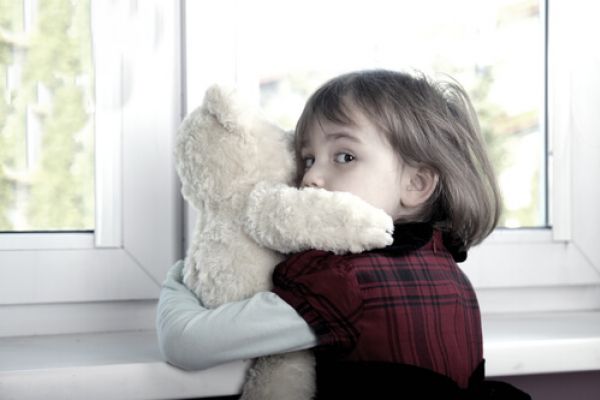PARENTAL ALIENATION
https://www.psychologytoday.com/intl/blog/co-parenting-after-divorce/202311/countering-denialism-about-parental-alienation
Countering Denialism About Parental Alienation
Refuting claims against parental alienation as a form of family violence.
Posted November 8, 2023 Reviewed by Devon Frye
KEY POINTS
- Parental alienation is a form of family violence that targets otherwise healthy parent-child relationships.
- The scientific status of parental alienation has been confirmed through a large body of research.
- Spurious claims against the concept of parental alienation can be refuted by existing scientific evidence.
Parental alienation is a complex form of family violence that targets a parent by means of damaging that parent’s relationship with their child. The two main features of parental alienation are the child’s unjustified rejection of and refusal of contact with the targeted parent and the alienating parent’s abusive strategies to denigrate the parent.
Parental alienation is a relational problem that must satisfy five criteria: The child refuses or opposes contact with the parent; the child has previously had a good relationship with the parent; the parent has not subjected the child to violence, abuse, or gross neglect; the favored parent uses several alienating strategies and methods; and the child shows signs of psychological or behavioural disturbances that may indicate that they are prone to alienation (Bernet et al, 2022). The negative effects of parental alienation on the child and the targeted parent are profound, and the incidence of parental alienation is much higher than is commonly assumed.
The scientific status of parental alienation has been confirmed through a large body of research (Harman et al, 2022), and the DSM-5-TR has identified the core elements of parental alienation under the condition of “parent-child relational problem” (including “negative attributions of the other’s intentions, hostility toward the other, and unwarranted feelings of estrangement”). However, parental alienation remains controversial in the realm of family law, policy-making, and professional practice, even though the opposition to acknowledging this form of family violence is inadequately justified (Bernet & Xu, 2022).
Misleading statements, misinformation, errors, use of science denial techniques, and misrepresentations of the current state of peer-reviewed published research and case law support regarding intimate partner violence and parental alienation have been made by vocal critics of parental alienation, which have been documented by a number of scientific associations. In particular, the claim that abusive men bring forward false allegations of parental alienation to deflect attention away from their own perpetration of intimate partner violence is used to discredit the concept of parental alienation and to induce a moral panic, seized upon by popular media accounts based on misunderstandings about the concept.
Arguments against the concept of parental alienation are easily refuted by the wealth of scientific evidence that has emerged in the past decade, in particular regarding intimate partner violence, family violence, and parental alienation. To counter the claim that parental alienation is a hoax, we need to draw attention to the following:
- A scientific consensus has emerged that parental alienation is a form of family violence and intimate partner violence, as well as a form of child abuse. With over a thousand publications on parental alienation, most of which are empirical studies appearing over the past decade, the abusive strategies of alienating parents have been well-documented, as have the effects of alienation on children and parents, which constitute a significant form of harm. (Harman et al, 2022, 2018).
- Intimate partner violence, family violence, and parental alienation are not gendered phenomena; men and women are both perpetrators and victims. The claims that intimate partner violence is solely a women’s issue, on the one hand, and that parental alienation affects only men on the other, are not borne out in scientific research. The widespread assumption that women are by and large the victims of intimate partner violence and that men are always the perpetrators is erroneous (Harman et al, 2018).
- Most intimate partner violence, family violence, and parental alienation are not severe, but the severe forms of each have devastating consequences for both parents and children. For affected parents, parental alienation is a form of complex trauma; for children, it is child abuse writ large, causing a significant mental disturbance based on a false belief that the alienated parent is a dangerous and unworthy parent. Failing to acknowledge the psychological abuse that alienated children and parents are being subjected to in severe cases of parental alienation leaves them vulnerable, unprotected, and at risk of severe harm (Harman et al, 2018; Kruk, 2018).
- It is significantly more likely to find a substantiated claim of abuse against alienating parents as opposed to alienated parents. Parents found to have alienated their children are 82 percent more likely to have a substantiated claim of abuse against them than parents who are alienated. Targeted parents have an 86 percent greater chance of having a false or unsubstantiated claim of abuse against them than alienating parents (Sharples et al, 2023).
- There is no debate that judicial determination of custody in cases of established family violence is needed; it is erroneous, however, to assume that high-conflict cases, in which parents disagree on custodial arrangements for children after divorce, commonly involve serious family violence. This places children at risk of losing one of their parents via a sole custody or primary residence order and increases the risk of family violence in the majority of contested custody cases that did not previously involve violence (Kruk, 2018).
- Although the majority of high-conflict divorces do not involve family violence, half of first-time family violence occurs within the context of adversarial “winner takes all” divorce and the threat of parental alienation. Some experts argue that the adversarial child custody system seems almost tailor-made to produce the worst possible outcomes, where parents become polarized when the stakes are high, and disagreements become intense conflicts with the potential to escalate into situations of violence (Kruk, 2018).
- Shared parenting arrangements after parental separation can serve as a bulwark against intimate partner violence, family violence, and parental alienation, and are a protective factor for children. Shared parenting arrangements lead on average to significantly better outcomes for both children and parents on all measures of divorce-specific and general adjustment than sole custody or primary residence arrangements (Kruk, 2018).
- Allegations of intimate partner violence and family violence are not the same as actual substantiated cases of family violence. False allegations of family violence are commonplace in the context of “winner takes all” adversarial divorce (Kruk, 2018).
- The two most significant factors in the adjustment of children to the consequences of divorce are the maintenance of meaningful relationships with both of their parents within a shared parenting living arrangement and being shielded from family violence. The safety of children and parents is the main priority in cases of intimate partner violence, family violence, and parental alienation (Kruk, 2018; Harman et al, 2018).
- Intimate partner violence, family violence, and parental alienation must be regarded as criminal matters, and barriers to making perpetrators accountable and protecting victims need to be acknowledged, recognized, and removed. Victims of severe violence require the full protection of the criminal justice system. In addition, child protection authorities need to recognize and respond to children witnessing family violence, including parental alienation, as a child protection matter. Finally, treatment of parental alienation, including specialized intervention with children and targeted parents, and parent-child reunification programs, are vital to the well-being of children and families during and after the divorce transition.
References
Bernet, W., Baker, A. J., & Adkins, K. L. (2022). Definitions and terminology regarding child alignments, estrangement, and alienation: A survey of custody evaluators. Journal of forensic sciences.
Bernet, W., & Xu, S. (2022). Scholarly rumors: Citation analysis of vast misinformation regarding parental alienation theory. Behavioral Sciences & the Law.
Harman, J. J., Warshak, R. A., Lorandos, D., & Florian, M. J. (2022). Developmental psychology and the scientific status of parental alienation. Developmental Psychology.
Harman, J. J., Kruk, E., & Hines, D. A. (2018). Parental alienating behaviors: An unacknowledged form of family violence. Psychological Bulletin.
Kruk, E. (2018). Parental alienation as a form of emotional child abuse: Current state of knowledge and future directions for research. Family Science Review.
Sharples, A.E., Harman, J.J. & Lorandos, D. (2023). Findings of abuse in families affected by parental alienation. Journal of Family Violence.
PARENTAL ALIENATION
PARENTAL ALIENATION
PARENTAL ALIENATION
PARENTAL ALIENATION
PARENTAL ALIENATION
PARENTAL ALIENATION
PARENTAL ALIENATION
PARENTAL ALIENATION
Groups.io Links:
You receive all messages sent to this group.
View/Reply Online (#40442) | Reply To Group | Mute This Topic | New Topic
Your Subscription | Contact Group Owner | Unsubscribe [admin@mensrights.com.au]














